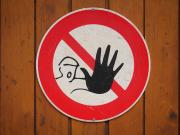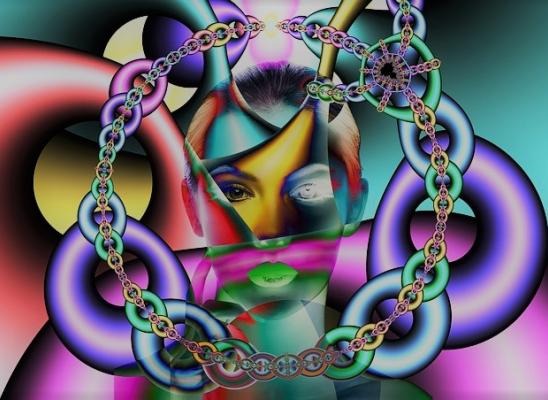New treatments target the brain

Online test
Find out the severity of your symptoms with this free online test
While reviewing mental health news for potential blog postings, I noticed multiple announcements regarding transcranial magnetic stimulation (TMS) for treating obsessive-compulsive disorder (OCD). After reading the press release from Achieve TMS which states “There are no systemic side effects, and patients are able to safely drive to school or work immediately afterward,” a fearful question from my inner skeptic popped into my head: Does anyone remember lobotomies?
Discovered during research on Parkinson’s disease, the FDA approved deep brain stimulation (DBS) for use in the treatment of treatment-resistant depression and now new forms of it are approved for OCD. It may not be long until variations of these treatments become available for other disorders such as trichotillomania and other BFRBs because they are included in the OCD spectrum of disorders despite significant differences.
Targeting the Brain
Neuropsychiatry took the place of the field known as psychosurgery. As the modern age of medicine developed in the early twentieth century, the field of  psychiatry sought to establish a connection between mental illness and the brain. The goal was to show that the brain caused mental illness, which meant that if the brain caused the problem, the problem could be fixed. Voila! Simple solution. Pardon the oversimplification, but this was also the time in history when some of the first psychotherapeutic medications were introduced. The results of research at that time produced procedures such as lobotomy and electroconvulsive therapy (ECT) as well as lithium and Thorazine.
psychiatry sought to establish a connection between mental illness and the brain. The goal was to show that the brain caused mental illness, which meant that if the brain caused the problem, the problem could be fixed. Voila! Simple solution. Pardon the oversimplification, but this was also the time in history when some of the first psychotherapeutic medications were introduced. The results of research at that time produced procedures such as lobotomy and electroconvulsive therapy (ECT) as well as lithium and Thorazine.
Fast-forward to the present, and there are more medications for mental illness than ever before with millions of people taking psychotropics as well as undergoing limited ECT for treatment-resistant depression.
Types of “brain surgery”
The following is a list of neurological procedures approved for use for various mental health disorders including short descriptions. For longer descriptions, see the National Institute of Mental Health’s website.
Electroconvulsive Therapy (ECT)
- Electrodes are placed on the head, and an electric current passes between the electrodes through the skull and brain causing a seizure.
- Used for treatment-resistant depression, bipolar, and schizophrenia.
Vagus Nerve Stimulation
- A pulse generating device is implanted in the upper chest with a wire attached to the left vagus nerve. Every five minutes, a 30-second pulse sent to the wire stimulates the vagus nerve to deliver signals to the brain.
- Initially used for those with epilepsy, it can be used for treatment-resistant depression in some cases.
Deep Brain Stimulation
- A pair of electrodes is surgically implanted in the brain with a battery pack in the chest providing constant electrical stimulation of the brain.
- Approved for use with movement, seizure and tic disorders as well as experimentally for depression and OCD.
Transcranial Magnetic Stimulation (TMS)
- Uses magnetic energy to stimulate the brain at a targeted site with intermittent pulses over 30-60 minutes.
- The magnetic energy does not reach as far into the brain as electricity does, so targeting specific brain regions is easier.
- Approved for use with treatment-resistant depression and OCD.
Each of these procedures warns of side effects including discomfort, headaches, dizziness, mood changes, nausea, muscle aches, and memory loss. Proponents of the new TMS device state it does not have side effects like medication does, which may be true, but anytime something foreign is introduced to the body, the body reacts. Everyone reacts to medications and other therapeutic interventions differently, so it is challenging to predict outcomes or side effects.
Caution
Outcome research does not provide concrete evidence that treatments work. That can be said about these new treatment options as well as treatments believed to be helpful. There will always be conflict in research. However, when the company who makes the machine provides outcome research in full support of the treatment, those results should be met with skepticism. The best-practice standard for treatment-related research is the double-blind, randomized controlled trial. Not many of those provide conclusive results either. The point is, approach research with caution and look for it from various reliable sources.
Even though the FDA approves a medication or treatment for use for a particular condition or population does not mean it works for everyone nor does it mean it will be used properly. Additionally, the guidelines for use are vague. It is meant for those with “treatment-resistant” depression, yet at which point does someone qualify for that definition. Without definitive diagnostic procedures and widespread use of brain imaging for diagnosis, it is likely that this treatment will be recommended for people who are not good candidates.
The Quick Fix
Americans are obsessed with quick fixes. People reach for medication and skip therapy even though evidence shows better outcomes when people use both. Medication works faster and takes less effort. The press releases and news stories about TMS make it sound like a miracle treatment. For some people, it may be true, but so were lobotomies.
Recommendations
If you or someone you love is considering DBS or TMS, consider these tips.
- Diagnostics. Get opinions from several experts. Make sure the diagnosis is accurate and supported.
- Try multiple treatments and give it time. Try different interventions and work with a therapist who specializes in your diagnosis. When working with a good therapist, expect to experience some results after 6-8 sessions even though full recovery may take longer.
- Research the procedure. Talk to your provider about current research on outcomes. Look for side effects and how people feel months or years after the procedure.
- Ask multiple providers about the procedure. Since TMS is not paid for by most insurance yet, it will be a self-pay treatment which means providers will be looking to make money from it. Go through assessments with multiple providers and compare notes regarding their observations. If you work with a therapist, get wise counsel from them.
- Evaluate risks and worst-case scenarios.
When considering treatments that mess with your brain, be careful, be cautious and make informed choices.
Online test
Find out the severity of your symptoms with this free online test
Start your journey with TrichStop
Take control of your life and find freedom from hair pulling through professional therapy and evidence-based behavioral techniques.
Start Now




